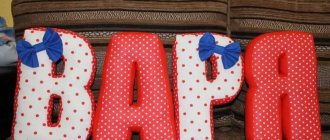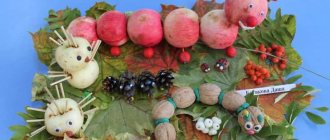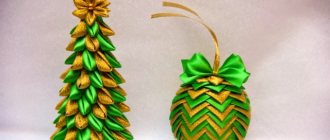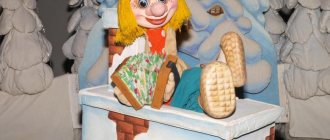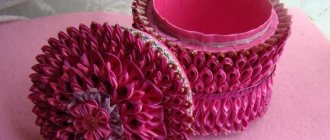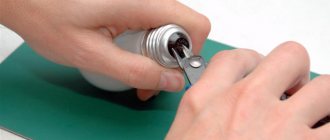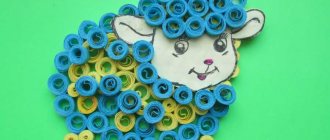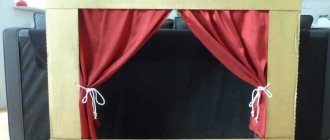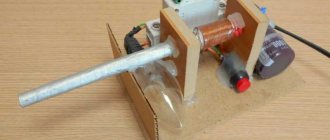Variety of school extracurricular activities
Topics for creative assignments can be very different. These are the seasons, women's holiday, New Year, various dates and events related to both the life of the country and the life of one school.
Thematic assignments may also refer to work performed using certain techniques or materials. They often refer to various trades such as sewing, knitting, weaving, pastry making, carpentry, designing and modeling.
The list can be endless, just like human imagination, which finds creative application in any field of activity.
Application - what is it?
Applique is a type of decorative and applied art, the principle of which is the technique of cutting, applying and attaching parts to a base.
The name comes from the word applicatio, which in Latin means “application”. Composing images using the appliqué method is the oldest technique for decorating household items among different nationalities, which is still used today. By gluing or sewing figures cut out from various materials onto a selected background, you can get not just a picture, panel or postcard, but also a real masterpiece.
Classification of application techniques
Since this type of image is distinguished by its silhouette, color distribution and expressiveness, pictures can be created using different techniques. Application techniques define:
color spectrum:
- monochrome,
- black and white,
- multicolor;
form:
- flat - elements cut from flat material are attached to the base;
- volumetric (convex) – elements of the surface layer have a volumetric shape, for example, lumps of cotton wool;
subject:
- subject – individual objects are depicted;
- plot - semantic display of action, plot, event;
- decorative – pattern, ornament, as decoration elements.
What are the benefits of the application?
Modern appliqué techniques for children combine the use of different types of textures. You can create a craft from plain, colored paper, bright fabric and waste material. For example, seeds, various types of cereals, and dried plant parts can be used in the work.
Today, many templates have been developed that allow you to create thematic compositions. They allow you to stimulate the attention, memory and imagination of a preschooler.
Professional teachers should prepare unusual topics for creative activities that arouse children's interest.
This type of creative activity is used to develop a teenager’s capabilities. Thanks to this, it is possible to develop your horizons and identify your main talents.
The importance of competitions and exhibitions for schoolchildren
Announcing the opportunity for children of any age to make crafts with their own hands for a school competition is an excellent motivation for unleashing their creative potential and an opportunity to try their hand at new areas of life. This is also an opportunity to discover hidden talents and gain recognition in the school community.
Teachers and organizers of hobby groups can, as a result of a competition, identify gifted children in order to help them develop their abilities with the help of a specialist leader. The best works deserve prizes and a place in a class or school museum.
Indian
You will need: colored paper - red, orange and yellow, a simple pencil, scissors, a toilet paper roll, glue, 2 buttons, paws from an old toy.
Master Class
- Glue buttons onto the sleeve as eyes.
- Cut out a beak from orange paper, then glue it on.
- Cut out a small curly strip of red paper and glue it under the beak.
- Trace the palm onto construction paper, then cut it out.
- Make 6-9 of these palms.
- Glue the palms as feathers.
- Glue the paws.
The bright Indian is ready! I recommend watching this interesting video!
TOP 5 COOL BULLET IDEAS BEST OF THE BEST DIY
Help from parents with assignments
Great help will be provided by parents who will find enough time and mental strength not to hastily do a task instead of a child, but to help him express himself independently.
It is important that the young creature acquires new skills and learns how to handle unusual materials and tools. Support, attention from parents and joint creative work with a child will bring you closer together than any other activity.
At home, the elders will help you pick up some items that no longer have any value, but will serve as part of a unique exhibit. This could be old jewelry, unwanted cans, spools, leftover yarn, scraps and much more. Adults can also remember original recipes from their childhood and teach them to children.
Fabric and knitted items for school
The skills acquired by schoolchildren in labor lessons are widely used by them in creating original objects. The photo of DIY crafts for school shows a lot of things knitted or crocheted, embroidered, woven using the macrame technique, and sewn from scraps.
On the Internet you can find a wide variety of samples, simple diagrams, patterns and step-by-step descriptions for all types of needlework. Based on them, you can learn basic working techniques, and then develop your own creative projects.
This section contains a variety of pillows, oven mitts, towels, doll accessories, knitted and sewn toys, patchwork quilts and embroidered rugs.
Compositions from different types of products
At autumn exhibitions and “Harvest Festivals” you can often see original compositions of pumpkins, corn cobs, wheat, zucchini, onions and other vegetables and fruits. The gifts of nature are also used at school to make handicrafts.
Cabbage bunnies, crocodiles made from cucumbers, hedgehogs made from potatoes, a fairy-tale monster made from pumpkins, men made from corn - this is just a small part of the various ideas for creativity. Such work is short-lived, but every year a new harvest helps create new types of crafts.
Interesting panels are made from grains, cereals, pasta of various shapes, with dry twigs, paper and tree leaves. For long-term storage, they must be treated with any soil solution. After this they lend themselves well to painting. Cones, acorns, chestnuts, and dried berries are widely used in children's creativity.
Large
Now, we will show you the biggest crafts.
Snowman made from boxes
To make this snowman, let's prepare the boxes. You can purchase ready-made white boxes, or you can paint them yourself. We put a stencil with flowers on the largest box and cover it with red paint. The middle tier will have diamond-shaped buttons. We sew a carrot from orange fabric and stuff it with soft filling. On the smallest box we draw eyes and securely fasten the carrot. We stack the tiers on top of each other, tie the scarf and pull on the hat. The snowman can be used as storage space.
Snowman made from plastic bottles
Such a snowman will definitely surprise classmates and teachers at school. Place plastic cups in a circle. It is important that they are close to each other. We securely fix the glasses with a stapler. We continue adding layers until a hemisphere is formed. Place another ball on top. Since the figure is hollow inside, you can place a lamp or an electric garland. At the end, we add decorative elements. The snowman is ready to please others.
New Year's wreath made of tinsel
As a frame, take a thick wire and twist it into a circle. We wrap the wire with scrap fabric, distributing it evenly over the wire. After this, we wrap the wreath with green tinsel. Attach a large bow and various Christmas tree decorations.
Large Cardboard Deer
This deer is impressive in size, although it is not at all difficult to make. It is necessary to transfer the parts to large cardboard and cut them out. After which, the elements are connected to each other without the use of glue or tape.
Fluffy Christmas tree made of beads
This work requires patience and diligence. White beads are strung on the tip of each branch. You should start weaving the Christmas tree from the top, gradually adding the amount of beads for each branch. The Christmas tree looks almost like a real one.
From play to new discoveries
Often, collections of outdated or non-working radio components are kept by professionals and radio electronics enthusiasts and are passed down through generations, along with passion. They can be a source of inspiration when making DIY crafts from recycled materials for school.
Multi-colored resistors, capacitors, radio tubes, wire parts of non-working computer boards, shiny holders, switches and circuit breakers - all this can become a decoration in the form of a bracelet made of resistors or a pendant from a piece of a sound card, beautifully cut and sealed at the edges. You can add technical equipment to this electronic composition in the form of sound design or LED lighting.
The habit of working with parts, the ability to handle a soldering iron and other tools can, over time, develop into a serious passion for assembling working devices, and then it’s not far from new scientific discoveries.
Step-by-step instructions for sculpting a rowan tree
Class 1 plasticine crafts usually include various figures of the world of flora and fauna. This craft is not particularly difficult to make, but children develop fine motor skills and learn shapes of different sizes.
To work you need:
- green, brown and red plasticine;
- stack or scissors for cutting plasticine.
The creation process consists of the following points:
- Form a ball from a small piece of green plasticine.
- Form a cone from brown plasticine, make it slightly curved - this is the trunk of the future tree.
- Connect the ball and cone.
- You need to make small balls from red plasticine, and leaves from green plasticine.
- Then you need to form rowan bunches. To do this, you need to connect the leaves and red balls.
- The next step is to place the resulting bunches on the base made in step 3.
The result was a beautiful and easy-to-make tree.
